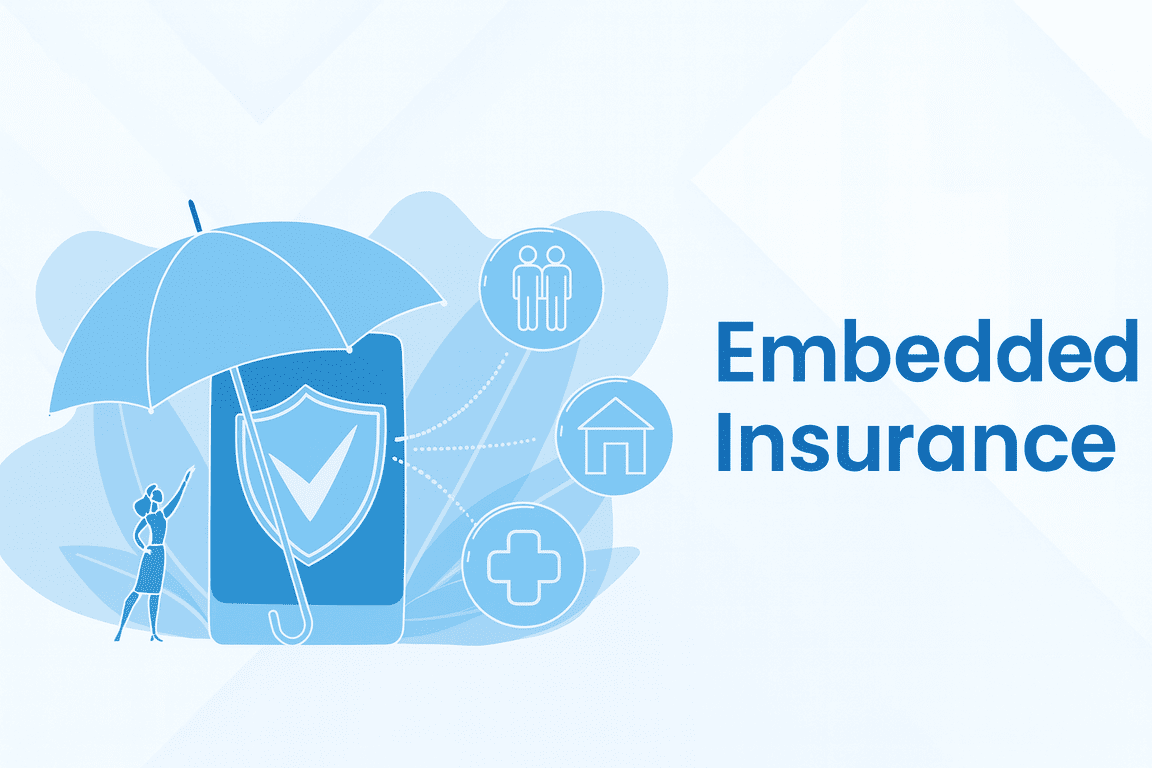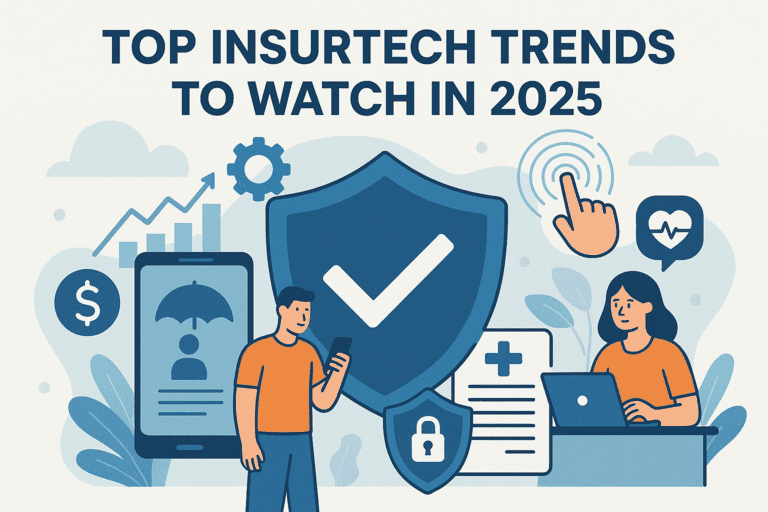Like many other industries, dental care is being transformed by digital technology. Digital dentistry has turned what once required multiple visits, messy impressions, and weeks of waiting into faster, more comfortable experiences.
Table of contents:
- 1. What is digital dentistry?
- 2. Key technologies driving the digital dentistry revolution
- 3. The benefits of digital dentistry for patients and dentists
- 4. Challenges and limitations of digital dentistry
- 5. Future trends in digital dentistry
- 6. Case study: real-world impact of digital dentistry
- 7. How to implement digital dentistry in your practice?
- 8. FAQ
What is digital dentistry? How does it differ from the traditional approach? What are its benefits and challenges? Read on to find answers to these and other questions.
What is digital dentistry?
In simple terms, digital dentistry is the use of digital tools for the examination, diagnosis, and treatment of oral health issues.
Traditional vs. digital dentistry: what has changed?
Traditional dentistry relies on manual techniques, physical impressions, and analog tools, such as impression trays, calipers, film-based X-rays, and others. For example, in order to create a crown, a dentist uses trays filled with impression material, sends the mold to a lab, and waits days or even weeks for laboratory technicians to fabricate the restoration.
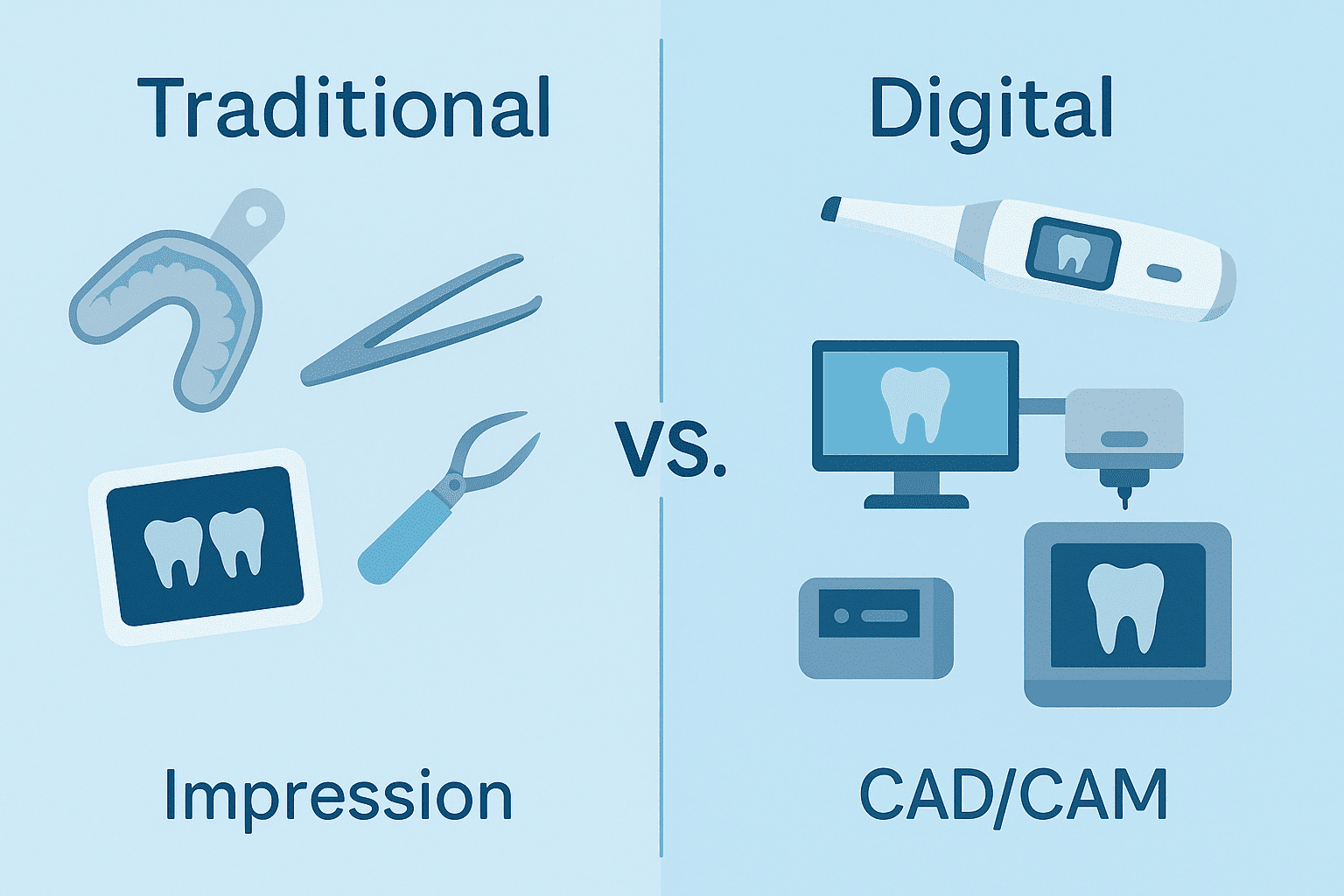
Digital dentistry, on the other hand, uses advanced technologies like intraoral scanners, CAD/CAM systems, and 3D printers to streamline this process. Instead of physical molds, dentists take digital impressions; dental restorations can be designed and milled in-house, sometimes even on the same day.
Overall, digital dentistry allows for faster treatments, ensures accuracy, and significantly improves patient experience.
Key technologies driving the digital dentistry revolution
Dentistry has come a long way from impression trays and paper charts. Today, digital technologies are changing how dental professionals diagnose, plan, and deliver care. Below are some of the innovations most widely used in modern dentistry.
Intraoral scanning
Intraoral scanners allow dentists to capture high-quality digital impressions of teeth and other oral structures. Digital scans can be used to produce aligners, crowns, onlays, inlays, fixed partial dentures, occlusal devices, and implant surgical guides.
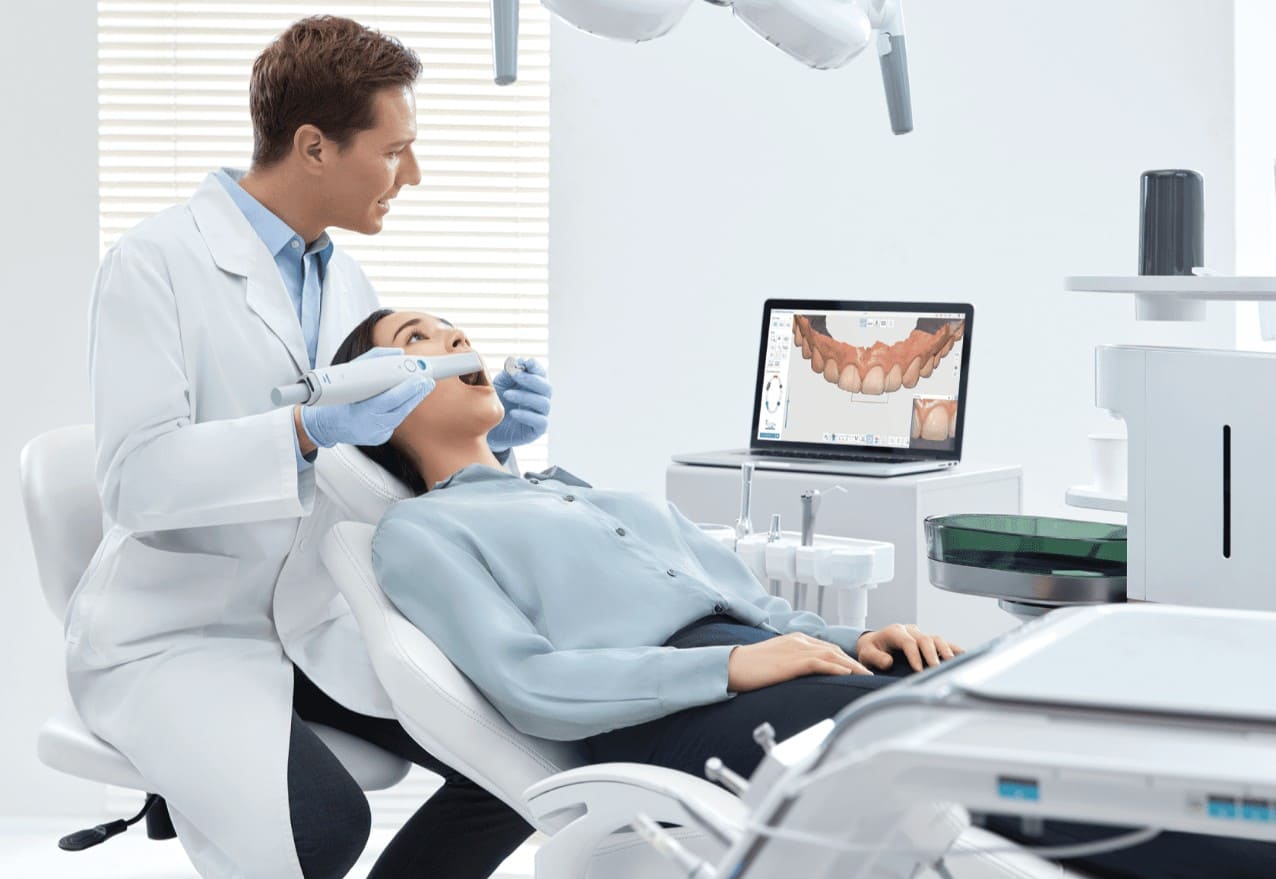
Compared to the traditional method of capturing impressions, intraoral scanning offers a faster and more comfortable experience for patients. In addition, according to a 2021 survey conducted by the American Dental Association (ADA) Clinical Evaluators (ACE) Panel, dentists cited improved patient outcomes, greater efficiency, and enhanced patient education as the main benefits of adopting this technology.
3D printing
In modern dentistry, 3D printing technology is used to make crowns, implants, veneers, bridges, molds, retainers, aligners, indirect bonding trays, and dental models. 3D printers convert digital images into highly accurate restorations and appliances faster and at a lower cost than traditional manufacturing methods.
CAD/CAM technology
CAD/CAM technology (Computer-Aided Design/Computer-Aided Manufacturing) enables dentists to design and produce restorations such as crowns, veneers, inlays, onlays, and bridges with high precision. CAD/CAM covers everything, including intraoral scanning, creating a digital design, printing or milling, and implementation.

This technology helps accelerate clinical workflows, allowing for same-day restorations in many cases and reducing the need for multiple appointments.
AI-powered diagnostics and treatment planning
Artificial intelligence is being widely adopted in dental clinics. It helps practitioners analyze dental scans, X-rays, and patient data. AI-powered software assists in detecting cavities, bone loss, gum disease, oral cancer, and other conditions that might be missed by the human eye.
Based on patient data, AI can suggest tailored treatment plans, enabling dentists to make faster and more accurate decisions. While AI doesn’t replace clinical judgment, it complements and streamlines modern dental care.
Teledentistry
After seeing increased adoption during the COVID-19 pandemic, teledentistry continues to grow as an accessible way to deliver dental care beyond the traditional chairside model.

Teledentistry means using digital communication technologies to deliver dental care, consultation, education, and treatment remotely. Dentists use video calls, messaging, or image sharing to consult with patients remotely, primarily for follow-up visits, initial screenings, and triage, saving both patients and practitioners time.
The benefits of digital dentistry for patients and dentists
Digital dentistry isn’t just about using digital technology — it’s about delivering exceptional care to patients while streamlining clinical processes. Here are some of the key benefits that set digital dentistry apart from traditional methods.
Increased accuracy and efficiency in treatments
One of the major benefits of digital dentistry is the high precision of diagnostics and treatment procedures. This unprecedented accuracy usually means correct diagnoses from the first visit as well as faster treatments.
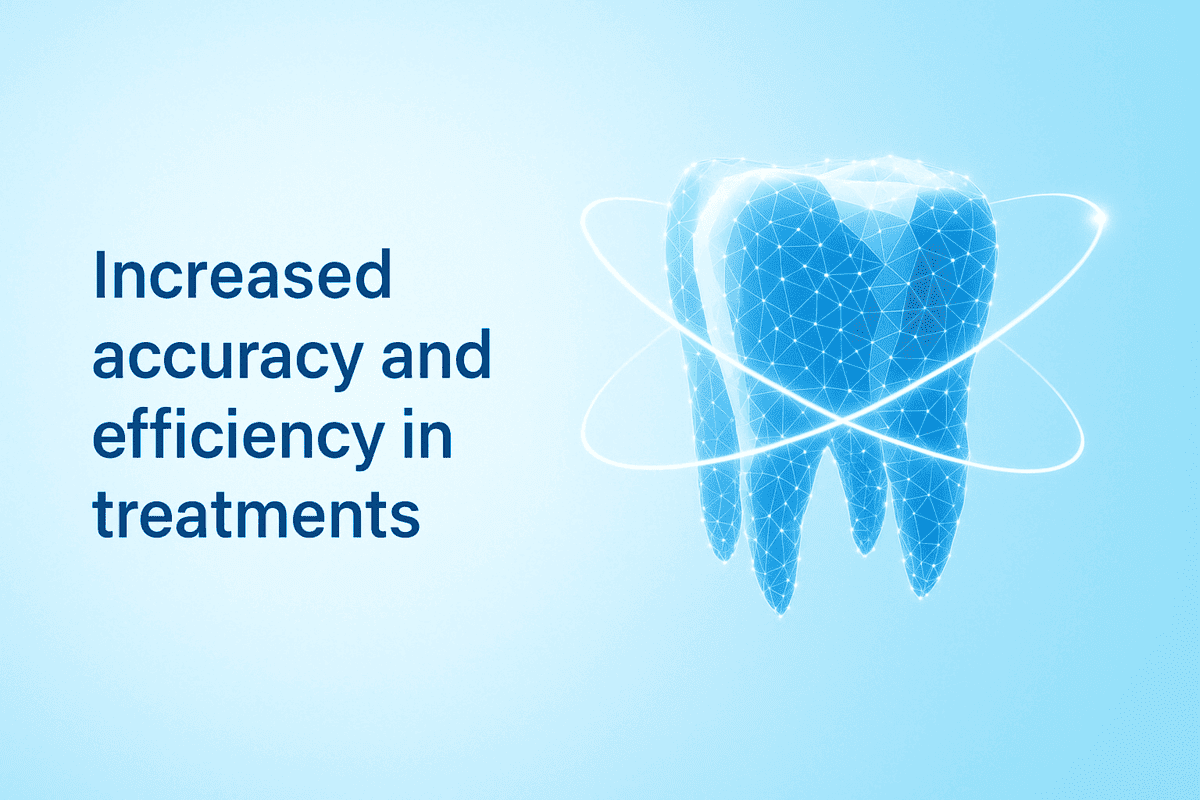
Enhanced patient experience and comfort
In many cases, digital dentistry enables same-day services, minimizing the need for additional appointments and the impact of dental care on a patient’s daily life.
Cost-effectiveness and time-saving advantages
While the treatment costs may be higher at a digital dentistry practice, patients can save time and money due to shorter and less frequent appointments. The same applies to dentists and dental clinics — while shifting to digital usually requires a considerable upfront investment, it allows them to serve more patients, leading to higher revenues in the long run.
Sustainability and eco-friendly practices in digital dentistry
Digital solutions reduce the need for disposable materials like impression trays and plaster models, cutting down on waste. Also, modern solutions like 3D printers enable in-house production, significantly lowering dental clinics’ environmental footprint.
Challenges and limitations of digital dentistry
While digital dentistry brings clear advantages, the shift isn’t without its hurdles. From investment costs to data privacy concerns, dental practices need to carefully weigh the challenges before adopting modern technology.
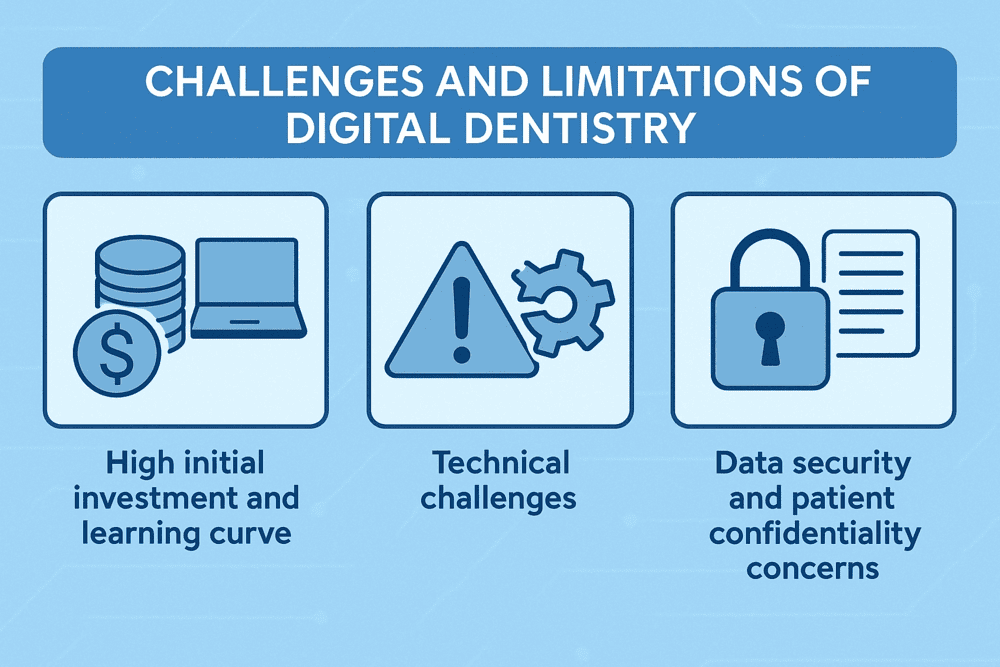
High initial investment and learning curve
Digital equipment such as intraoral scanners, 3D printers, and CAD/CAM systems, as well as software licenses, are expensive, which might be challenging for smaller practices. In addition, it takes time and training to learn the digital dentistry workflow, which can slow down adoption and affect productivity during the transition period.
Technical challenges
Dental clinics may experience compatibility issues between scanners, design software, and milling or printing devices, especially when using equipment from different manufacturers. In addition, like any technology, digital systems can break down or require updates, disrupting workflows and delaying patient care.
Data security and patient confidentiality concerns
Clinics are required to securely store and transfer digital records and scans to ensure compliance with data protection laws. This means they must also invest in cybersecurity measures to keep patient information safe.
Future trends in digital dentistry
Digital dental technology is evolving fast, with artificial intelligence, virtual reality, and other emerging technologies set to push things even further in the near future.
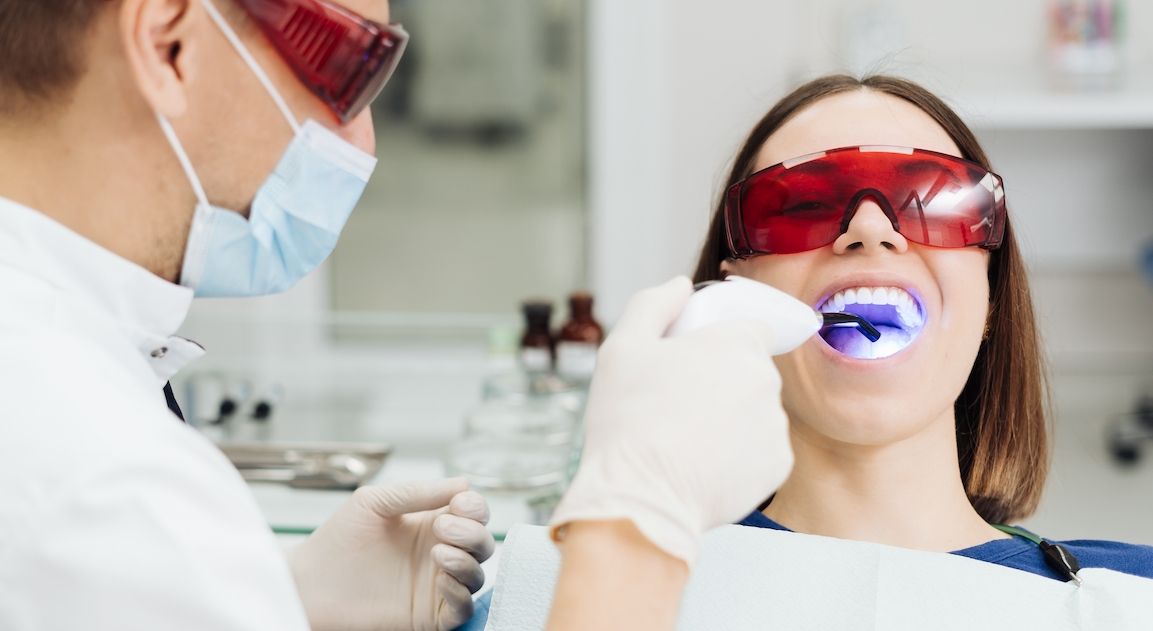
The role of artificial intelligence and machine learning
AI and ML are projected to play an even more significant role in how dentists diagnose problems and plan treatments. Today, AI and ML-powered digital dental systems can analyze thousands of patient records, X-rays, and dental impressions to spot patterns that humans might miss. AI also enables personalized patient care by tailoring recommendations to individual needs. As the technology improves, AI could help predict disease progression and suggest treatment options.
Virtual and augmented reality in dental education and treatment planning
Virtual and augmented reality — technologies that let users experience or overlay computer-generated visuals onto real or simulated environments — are being increasingly adopted in dental education and clinical settings. Virtual reality allows students to practice dental procedures in a simulated environment before they start working with real patients. In clinical practice, augmented reality can help dentists visualize nerves, bone structures, or implants during surgery by layering digital data over the physical world.
The impact of blockchain on dental records and data security
While still new to the dental world, blockchain has potential when it comes to securely storing and sharing patient records. Since blockchain creates a tamper-proof log of data, it can help prevent errors, reduce fraud, and ensure that patient history is both accurate and securely accessible across clinics. In the future, it might also streamline insurance claims processing.
Case study: real-world impact of digital dentistry
General dentists often spend valuable time diagnosing issues before referring patients to specialists, while patients may struggle to recognize symptoms or find the right specialist, especially one nearby who accepts their insurance. A US-based dental clinic turned to our telemedicine software development company to develop a digital solution that automates early diagnostics and helps guide patients toward the right care.
In five months, we built a dental monitoring app that collects patient information through an interactive questionnaire, assesses symptom urgency, and suggests the most suitable specialist based on the user’s responses, location, and insurance.
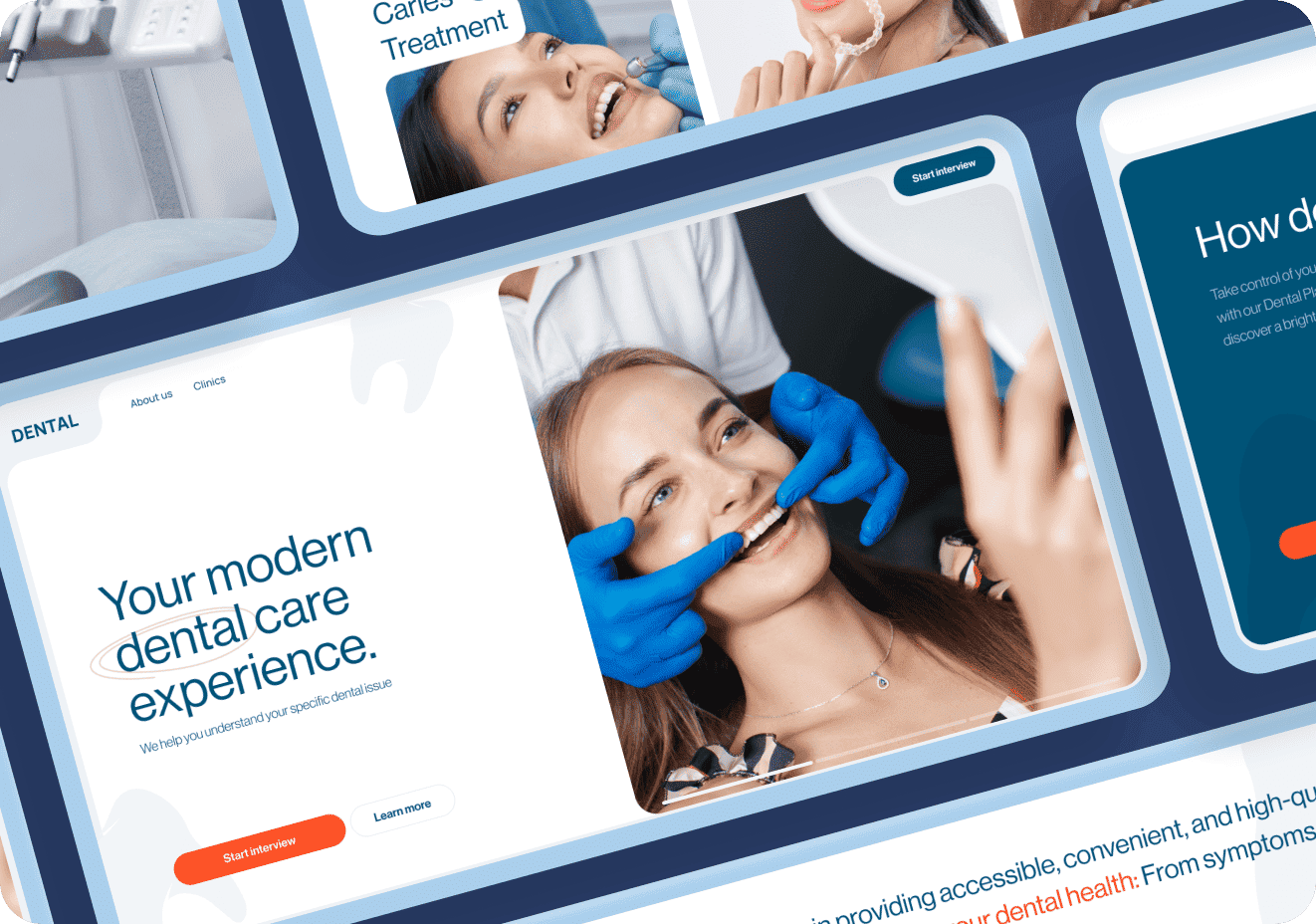
The app features AI-powered photo analysis, allowing users to upload images of dental issues like swollen gums or discoloration for instant feedback. Patients can filter results by ZIP code and insurance or browse trusted clinics without filling out the questionnaire.
In its first few months, our dental app helped over 3,500 users quickly find the right specialist. Within six months, our client partnered with 60+ clinics and keeps expanding.
How to implement digital dentistry in your practice?
Switching to digital dentistry doesn’t happen overnight, but with the right approach, it can bring lasting benefits to both your team and your patients. Whether you already have an idea in mind or don’t know where to start, TechVision can help. We have extensive experience developing digital dental solutions that make a real difference.
FAQ
What does digital dentistry do?
Digital dentistry employs modern technology to improve the delivery of dental care. It involves using tools like intraoral scanners, 3D printers, and CAD/CAM systems to take digital impressions, design restorations, and fabricate them in-house.
What is the difference between digital dentistry and traditional dentistry?
Traditional dentistry utilizes physical impressions, plaster models, and manual processes, while digital dentistry replaces those steps with digital scans, computer-aided design, and milling/3D printing. It’s faster, more accurate, and often requires fewer appointments.
What are the disadvantages of digital dentistry?
The major disadvantages of shifting to a digital workflow in dentistry include costly equipment and software, extensive training, and technical issues like compatibility problems between devices.
What is the future of digital dentistry?
Its future looks promising, with artificial intelligence, virtual reality, and blockchain expected to further enhance dental care.









